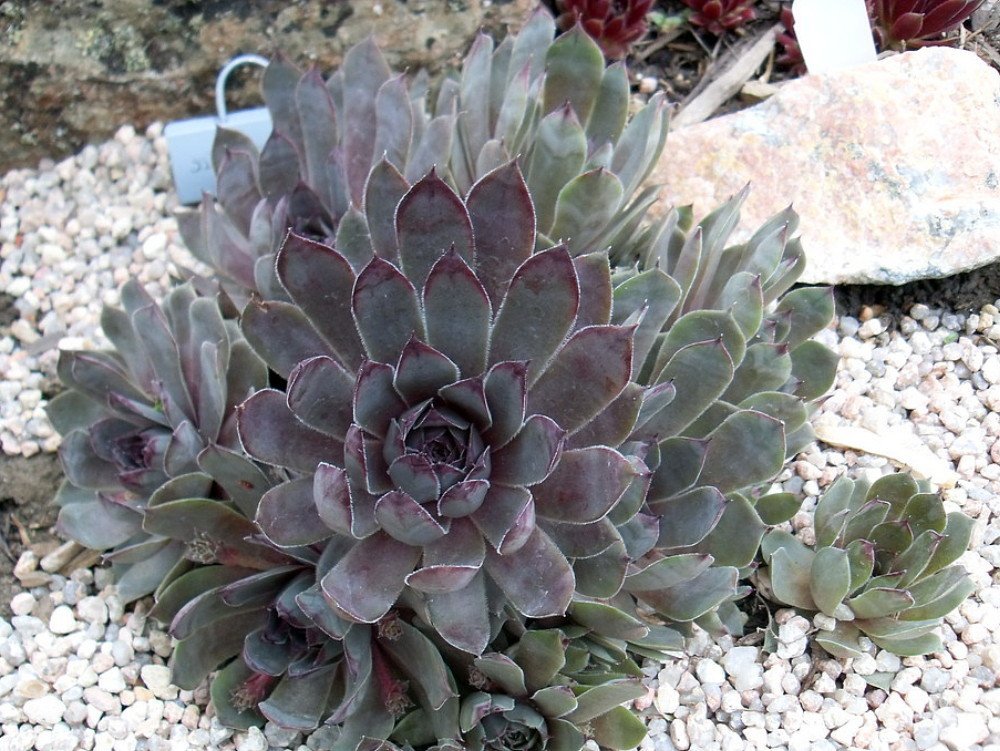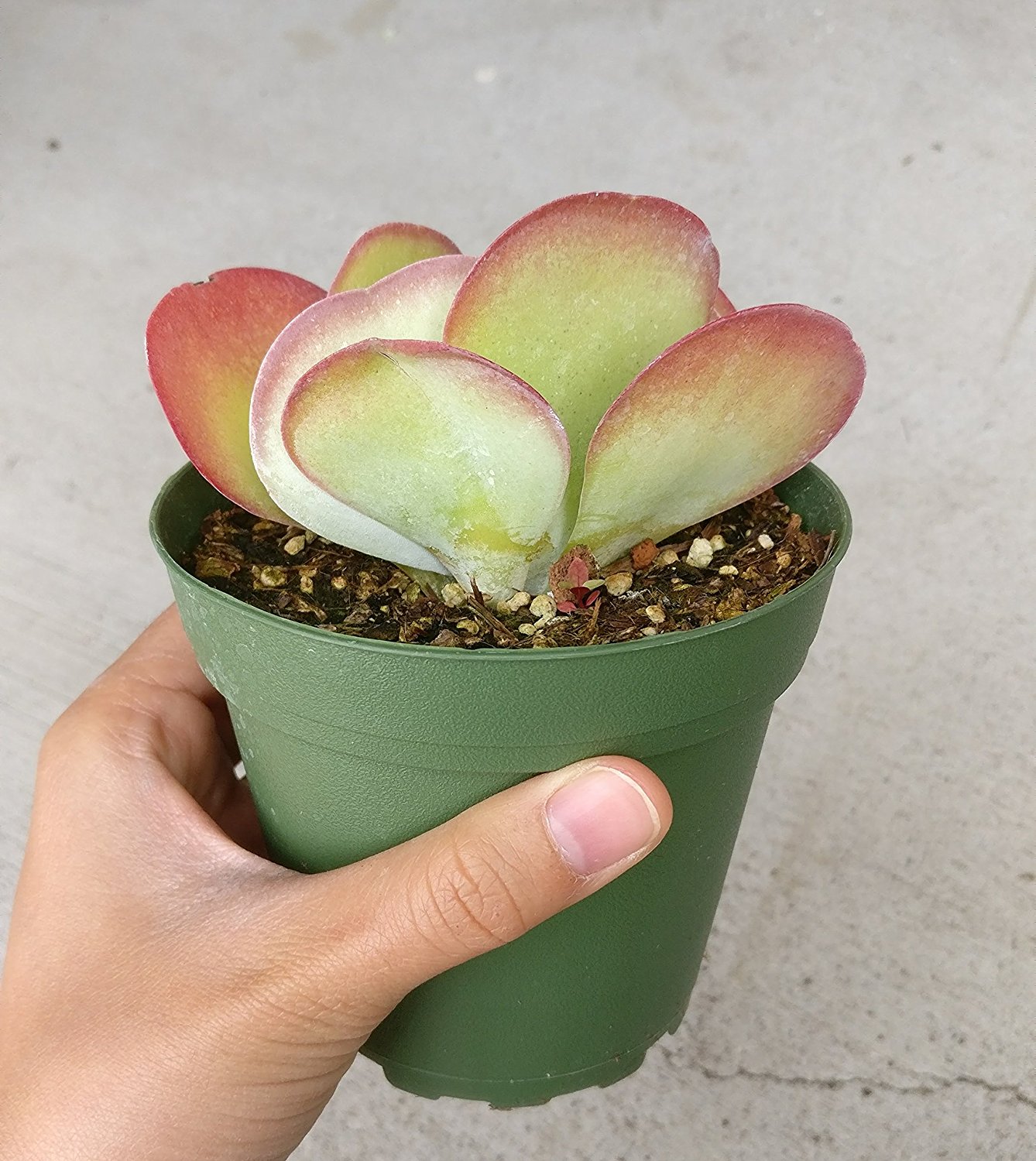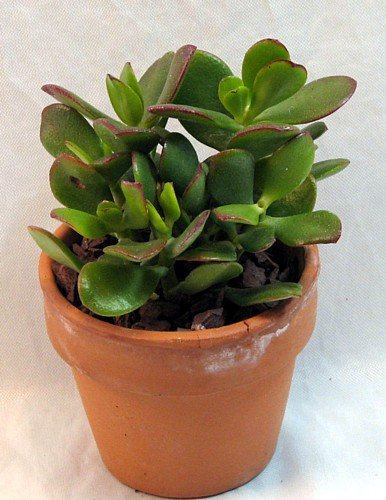Succulents are some of the most beautiful and varied plants out there, and a great choice for budding gardeners. With their countless varieties of endless colors, there is sure to be one that fits into any into any garden and appeals to any style. While many people see succulents as a difficult plant to care for, they are actually quite easy to grow and are surprisingly hardy. Today, we’ll look at how to care for succulents, and learn the techniques to learn how to grow succulents in your home.
This article is aimed at beginners, but even if you have some experience with succulents there’s sure to be something here for you too!
How To Grow Succulents For Beginners
Succulents refer to any number of plants with large fleshy parts, usually what you’d call their leaves. One characteristic they all share is the ability to store large amounts of water in their leaves, this is the key factor that defines a succulent and the reason for their lager parts. Some cacti are also succulents, but not all succulents are cacti.
Succulents come in a huge variety of colors, shapes, and sizes. This is part of the reason why they make such a popular choice for gardeners. You could easily spend your whole life growing and caring for these plants without getting bored.
You can find succulents at most nurseries, big box home stores, or even on Amazon and other online stores. You can generally find live succulents year round, making even the dead of winter a good time to start growing them.
Soil & Container
When picking out soil, choosing one that drains appropriately is of the utmost importance. There are many kinds of pre-made succulent potting mixes, but other types of large particle mixes also works. Ideal soil will have large amounts of rocks or other inorganic material. You can also look for soil labeled as ‘cacti soil’ as this is typically well draining enough for succulents.
This helps to prevent over-watering by allowing more airflow which naturally helps the water to dry out. This type of soil should be fairly quick to drain, and only retain little bits of water. This is especially important indoors where the airflow is limited to begin with. In the end, this all helps to prevent over-watering, we’ll get into that more and the problems it can cause below in the water section.
Choosing a pot, you’re looking for the same characteristics as soil; one that drains well. This leaves most pots an option, just make sure to have a nice set of drainage holes at the bottom. If you can’t decide, going with the standard clay pot is never a bad choice. These also have the added benefit that they natural wick away water, which further helps to prevent overwatering.
Succulents can grow in a wide range of sizes, so your container size is often more a question of taste. Many indoor succulents will top out at about 6 inches, so small, windowsill containers are often a great choice. You can also easily grow multiple succulents in a single container provided it’s large enough. Try to give about 6” of space between succulents to ensure they have enough space to grow.
Lighting
There are many varieties of succulents with different lighting requirements, but most require roughly 6 hours per day. Most require indirect light, but some require it more intense and direct. Be sure to read up on your variety to ensure proper placement.
If there is an issue with that amount of light, you have a few options:
- Use a grow light: Using a grow light is a perfect option to getting more light to your plant. Using a daylight balanced LED bulb for a few hours can help give little extra light to your plant.
- Get a low light variety: Many types of succulents are perfectly able to thrive in low light. Types such as the Jade Plant will grow in low light conditions perfectly well. This makes them an excellent addition to most rooms in your home.
Also, bear in mind that light will effect growth. As noted above, succulents grown indoors often only reach heights of about 6 inches, and this is usually due to their lighting. If you supplement with natural light, or a grow light, you can expect your plant to grow a bit larger if their container allows it.
Direct Vs Indirect Light?
As noted above, many succulents prefer indirect light, too intense of sunlight can actually burn out their leaves. Indirect light is usually what you’d receive a few feet back from a south facing window, or what you’ll receive from a window facing east/west. Heat is another good indicator, an area in direct sunlight is going to get much warmer than one getting indirect light.
Generally, you’ll want to keep your succulents in one of these areas that gets indirect light. Keep in mind your succulent variety though, this is just general advice; some succulents may need more or less light.
Water
One of the most important, and often difficult, parts of growing succulents is getting the watering right. Their needs are a bit different than most plants you might be use to, and this can make it a bit of a challenge when learning how to grow succulents.
Succulents generally like brief periods of lots of water, followed by a longer period of drought. The typical advice of keeping the soil moist will actually kill most succulents.
When watering a succulent, wait until the soil is completely dry all the way through. Err on the side of watering not enough over too much. Once the soil is completely dry, give the soil a solid soaking that saturates the soil with water.
Due to the quick draining nature of soil (see the soil section above!) it’s okay to go a bit overboard as the water shouldn’t be sitting around for long. One thing to note, many gardeners suggest watering the soil directly and not the plant itself. Theres evidence that watering the plant can cause damage to the leaves of the plant and cause cosmetic damage. A little water getting on the leaves is fine, but make sure that there isn’t water sitting on them afterwards.
After a watering, give it a while and make sure the soil is completely dry before doing so again. The time between watering depends on a couple of factors (temperature and humidity to name two), but should be done roughly every 1-2 weeks. Some succulents will be happy going even longer between waterings though.
The important thing to keep in mind is that the succulent should not be sitting in wet soil. It should be drenched, and then allowed to drain quickly and completely before watering again. Succulents sitting in soggy soil are likely to die or attract pests.
Growing Cycle & Temperature
Succulents generally go through periods of growth and dormancy. This usually coincides with the seasons, don’t be surprised if your plant grows very little or none at all during the winter.
During these periods of dormancy it’s also important to water the plant less. Generally, during the winter, you can wait an additional couple of days between waterings. Not giving this extra time can over-saturate the plant and cause issues related to overwatering.
Temperature needs are also seasonally linked. During the summer having the plant in the upper 60’s to low 70’s (in Fahrenheit), while in the winter dropping it to the lower 60’s is ideal. These numbers are fairly middle of the road, a deviation of about 10° either way won’t harm the plant. Most succulents are fairly hardy so bits of extremes are not the end of the world. More important than absolute temperature is to avoid large, frequent temperature swings. This means you should keep your succulent away from drafty windows and heating/cooling units.
Keep in mind though, freezing temperatures will likely kill the plant. There are actually a few species that can survive freezing temperatures, but most won’t. This puts a hard limit on outdoor growing, make sure to bring them inside well before your region’s first frost date.
Pests
Succulents are pretty resilient when it comes to pests; indoors it is especially rare. That said, it’s still important to know how to deal with them should the issue arise.
The most common pest you may encounter is likely gnats. These are generally brought on by the poor conditions of overly-moist soil. The water logged soil and reduced defenses of the plant is a perfect storm for these annoying pests.
A good first step in this case is to correct the problem and get the watering schedule nailed down. This will help clear up any initial infestations, and restore strength to your plant so that it can naturally resist pests.
You can check out some additional tips for dealing with other common garden pests here.
Easy To Grow Varities
Not all varieties are created equal, some are much easier than others. When just starting out learning how to grow succulents it can be encouraging to start with an “easier variety”. We’ve picked out our top three that even a first time grower can tackle!

Hen and Chicks
The Hen and Chicks variety of succulent is an extremely hardy breed of this plant. While it does require a fair bit of direct sunlight, it’s otherwise very easy to grow and likely to survive even the most negligent gardener. Its direct sunlight need can also help make it easier to grow, you can pretty much stick it in a sunny spot and forget about it.

Paddle Plant
The paddle plant is another super easy to grow succulent. It requires very little water and light to thrive, making it great for those just learning how to grow succulents. It’s very low maintenance requirements also make it great for forgetful gardeners or those that travel a lot.

Jade Plant
Lastly, we have the jade plant. Like other easy care succulents, this one is generally killed by too much care instead of not enough. With infrequent waterings and indirect sunlight needs it is an excellent choice for first time succulent growers.
How To Grow Succulents
Succulents are an amazing plant, and with so many varieties there is sure to be one that fits into any garden. While sometimes seen as difficult, we hope that the tips here have helped you learn how to grow succulents better. It is well worth the effort to see this beautiful plant bloom!







